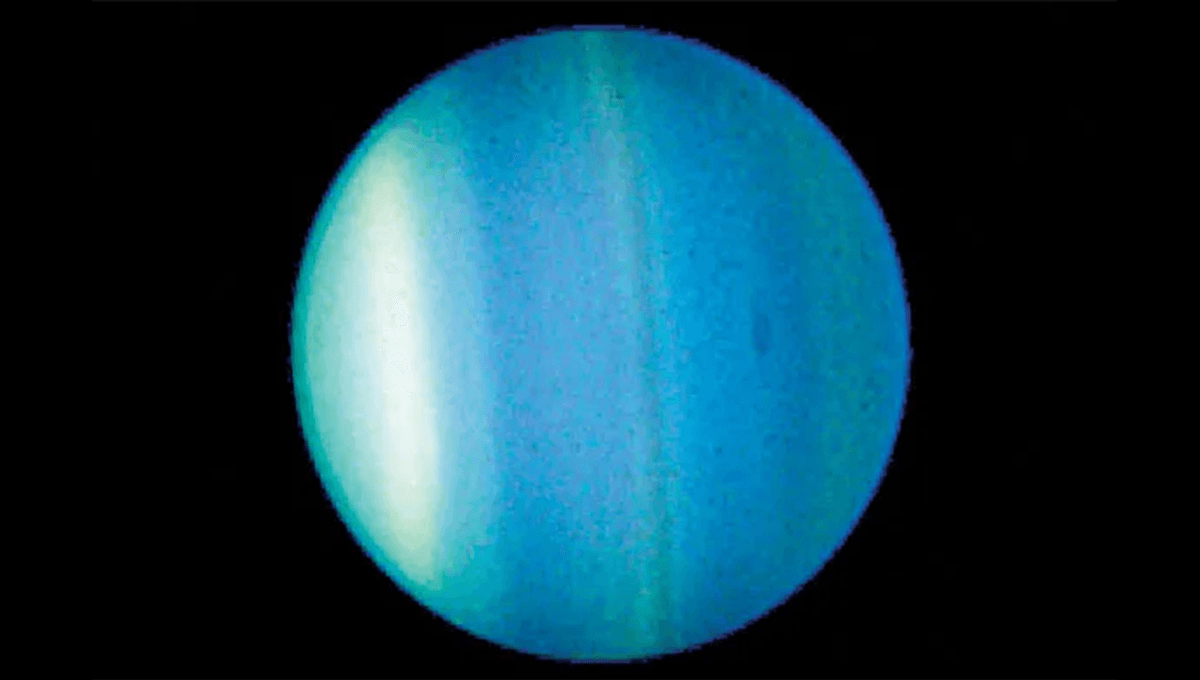
Uranus is filled with surprises and mysteries to solve. As well as probably containing a lot more methane than we thought, there are a few other strange things we found about Uranus when scientists first started looking into it. For instance, why is Uranus (and fellow ice giant Neptune) so far out in the solar system – and why is Uranus so weirdly lopsided?
The planet likely formed around 4.5 billion years ago, as gravity caused dust and gas to clump together into the swirling collection of mostly fluids. In their current positions, as far out as they are, Uranus and its fellow ice giant Neptune would not have been able to pick up enough material to form. Instead, scientists believe that the ice giants were formed closer to the Sun where this protoplanetary material was more dense, before migrating outwards to their current positions. During the planets’ formation, they likely helped create the asteroid belt between Mars and Jupiter, sending rocks flying inwards as they migrated.
Unusual among the planets and the two ice giants, Uranus also appears to orbit the sun on its side.
“Uranus is the only planet whose equator is nearly at a right angle to its orbit, with a tilt of 97.77 degrees. This may be the result of a collision with an Earth-sized object long ago,” NASA explains. “This unique tilt causes Uranus to have the most extreme seasons in the solar system. For nearly a quarter of each Uranian year, the Sun shines directly over each pole, plunging the other half of the planet into a 21-year-long, dark winter.”
Though the leading hypothesis is that Uranus took a colossal pounding from an object roughly twice the size of Earth.
“Uranus spins on its side, with its axis pointing almost at right angles to those of all the other planets in the Solar System,” lead author Jacob Kegerreis, PhD researcher at Durham University, said in a 2018 statement following research simulating such an impact. “This was almost certainly caused by a giant impact, but we know very little about how this actually happened and how else such a violent event affected the planet.
“Our findings confirm that the most likely outcome was that the young Uranus was involved in a cataclysmic collision with an object twice the mass of Earth, if not larger, knocking it on to its side and setting in process the events that helped create the planet we see today.”
There are alternative possibilities, perhaps explaining why Neptune did not suffer a similar collision in the early days of the Solar System. It’s possible that Uranus had a companion, a large moon that slowly nudged the planet into its current tilt as it drifted away, though simulations show that the satellite would only have to be about a thousandth of the mass of the planet itself. Our own Moon is also drifting away, and impacting the spin of our own planet as it does so.
For now, the colossal impact remains the leading hypothesis. We will only find more evidence by looking closer at Uranus, and maybe using a probe.
Source Link: A Huge Event In Its Past Made Uranus Tilt Sideways